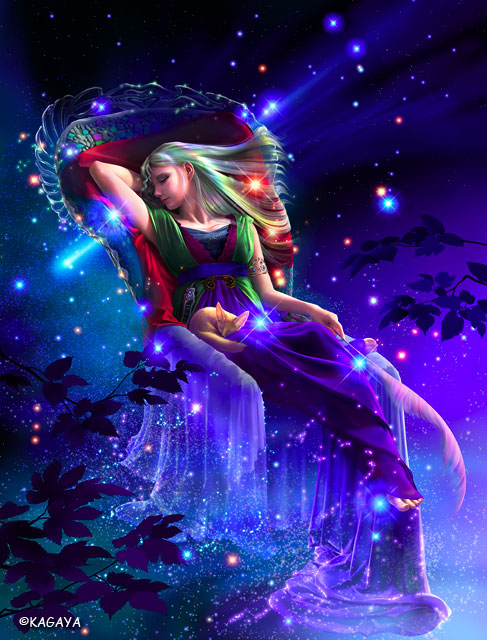
Gaia is the primal Greek titan personifying the Earth, the Greek version of "Mother Nature", of which the earliest refer to the term is the Mycenaean Greek ma-ka (transliterated as ma-ga), "Mother Gaia", written in Linear b syllabic script.[3]
Gaia is a primordial deity in the Ancient Greek pantheon and considered a Mother Titan or Great Titan.
Her equivalent in the Roman pantheon was Terra Mater or Tellus. Romans, unlike Greeks, did not consistently distinguish an Earth Titan (Tellus) from a grain goddess (Ceres).[4]
Hesiod's Theogony (116ff) tells how, after Chaos, arose broad-breasted Gaia the everlasting foundation of the gods of Olympus. She brought forth Uranus, the starry sky, her equal, to cover her, the hills, and the fruitless deep of the Sea, Pontus, "without sweet union of love," out of her own self through parthenogenesis. But afterwards, as Hesiod tells it,
she lay with her son, Uranus, and bore the world-ocean god Oceanus, Coeus and Crius and the Titans Hyperion and Iapetus, Theia and Rhea, Themis, Mnemosyne, and Phoebe of the golden crown, and lovely Tethys. After them was born Cronus the wily, youngest and most terrible of her children, and he hated his lusty sire.
Hesiod mentions Gaia's further offspring conceived with Uranus: first the giant one-eyed Cyclopes: Brontes ("thunderer"), Sterodes ("lightning") and the "bright" Arges: "Strength and might and craft were in their works." Then he adds the three terrible hundred-handed sons of Earth and Heaven, the Hecatonchires: Cottus, Briareos and Gyges, each with fifty heads.

Uranus hid the Hecatonchires and the Cyclopes in Tartarus so that they would not see the light, rejoicing in this evil doing. This caused pain to Gaia (Tartarus was her bowels) so she created grey flint (or adamantine) and shaped a great flint sickle, gathering together Cronus and his brothers to ask them to obey her. Only Cronus, the youngest, had the daring to take the flint sickle she made, and castrate his father as he approached Gaia to have intercourse with her. And from the drops of blood and semen, Gaia brought forth still more progeny, the strong Erinyes and the armoured Gigantes and the ash-tree Nymphs called the Meliae.
From the testicles of Uranus in the sea came forth Aphrodite. After Uranus's castration, Gaia gave birth to Echidna and Typhon by Tartarus. By Pontus, Gaia birthed the sea-deities Nereus, Thaumas, Phorcys, Ceto, and Eurybia. Aergia, a goddess of sloth and laziness, is the daughter of Aether and Gaia.
Zeus hid Elara, one of his lovers, from Hera by hiding her under the earth. His son by Elara, the giant Tityas, is therefore sometimes said to be a son of Gaia, the earth goddess, and Elara.
Gaia also made Aristaeus immortal.
Gaia is believed by some sources[5] to be the original deity behind the Oracle at Delphi. She passed her powers on to, depending on the source, Poseidon, Apollo or Themis. Apollo is the best-known as the oracle power behind Delphi, long established by the time of Homer, having killed Gaia's child Python there and usurped the chthonic power. Hera punished Apollo for this by sending him to King Admetus as a shepherd for nine years.
Oaths sworn in the name of Gaia, in ancient Greece, were considered the most binding of all.
In classical art Gaia was represented in one of two ways. In Athenian vase painting she was shown as a matronly woman only half risen from the earth, often in the act of handing the baby Erichthonius (a future king of Athens) to Athena to foster (see example below).
Later in mosaic representations she appears as a woman reclining upon the earth surrounded by a host of Carpi, infant gods of the fruits of the earth (see example below under Interpretations).






